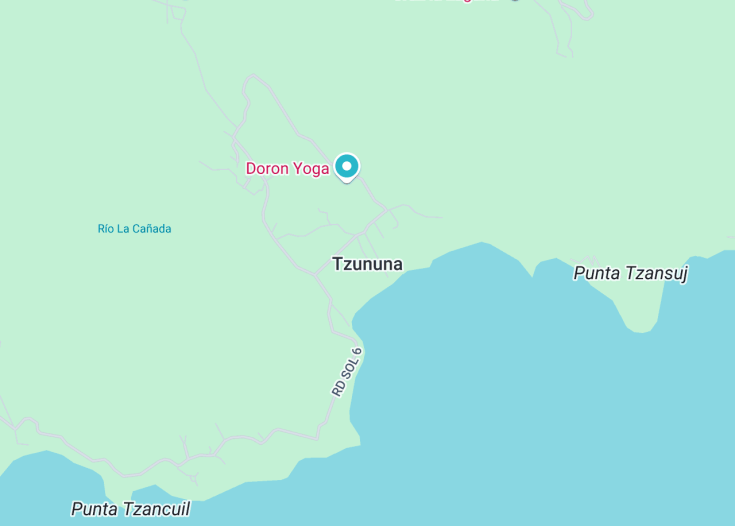Nestled on the shores of Lake Atitlán in Guatemala, Tzununa is a serene and picturesque village offering a distinct glimpse into traditional Mayan culture. Surrounded by lush mountains and rich volcanic soil, Tzununa attracts visitors with its natural beauty and tranquil environment. From kayaking on the placid waters of the lake to exploring coffee plantations, the village serves as an ideal spot for eco-tourists and cultural explorers alike. Tzununa’s authenticity and quiet charm make it a refreshing escape from the hustle of modern life.
Travel light and bring essentials only; navigating Tzununa’s hilly terrain is easier with less luggage, enhancing your mobility and comfort.
Consider visiting during the dry season, from November to April, for the best weather conditions, making your outdoor activities more enjoyable.
Top things to do & see in Tzununa
Select the following sights and activities to discover best tickets and tours available in Tzununa.
Tzununa: A Hidden Gem in Guatemala
| Country | Guatemala |
| Time in Tzununa | GMT-6 |
| Language spoken | Spanish |
| Population | 1,773 (Source: latest census data) |
| Currency | Guatemalan Quetzal (Q / GTQ) |
| Airports |
|
Located on the northern shore of Lake Atitlán in Guatemala, Tzununa offers a serene escape from the bustle of modern life. It is primarily populated by the Kaqchikel Maya community, contributing rich traditions and a deep sense of culture which retain the essence of its indigenous roots. Tzununa, though small in size and population, is a place where visitors can immerse themselves in an authentic Guatemalan village experience.
Where is Tzununa?
Nestled in the heart of the Guatemalan highlands, Tzununa is scenically positioned along the shores of the acclaimed Lake Atitlán.
Distances:
| Route | Distance by car | Time by car |
|---|---|---|
| Guatemala City to Tzununa | 100 miles (161 km) | Approx. 3.5 hours |
| Antigua Guatemala to Tzununa | 80 miles (129 km) | Approx. 2.5 hours |
What is Tzununa famous for?
Tzununa is renowned for its untouched natural beauty and tranquil lakefront spots, making it a perfect destination for those seeking a peaceful retreat surrounded by nature.
History
Pre-Columbian Period – Before the 16th Century
Tzununa, located in Guatemala, boasts a rich history that extends back to the pre-Columbian era. Historical records suggest that the area was originally inhabited by Mayan communities, who thrived due to the fertile volcanic soil and abundant natural resources provided by Lake Atitlán and its surrounding mountains. These early inhabitants were master cultivators and artisans, whose traditions and cultures deeply influenced the region’s historical tapestry.
Spanish Conquest and Colonial Period – 16th to 18th Century
The arrival of Spanish conquerors in the 16th century marked a significant shift for Tzununa. The region, rich in natural beauty and resources, caught the attention of the conquistadors, who integrated it into the Spanish Empire. This period saw the introduction of Christianity, significant changes in social structure, and the imposition of foreign governance. The Spanish introduced new agricultural practices and crops which altered the local economy and lifestyle of the indigenous Maya people.
Post-Independence – 19th Century to 20th Century
Following Guatemala’s independence from Spain in 1821, Tzununa experienced several political and economic shifts. The 19th century was characterized by the struggle between liberal and conservative forces within the country, which often impacted local governance and development. The 20th century brought about further changes, including the introduction of coffee plantations and other forms of agriculture which became the backbone of Tzununa’s economy.
Modern Era – 21st Century
In recent decades, Tzununa has seen a gradual transformation, becoming a destination for ecotourism and cultural exchange. The preserved natural landscapes, combined with a resurgence of interest in Mayan cultural heritage, have made it an appealing destination for both national and international tourists. Current efforts focus on sustainable development and preserving the unique ecological and historical heritage of the area.
Visit Tzununa
What to see and do in Tzununa, Guatemala.
Visitors to Tzununa can delve into a world of natural beauty and cultural richness. Highlights include:
- Nature Trails: Explore the numerous trails that wind through lush forests and offer magnificent views of Lake Atitlán.
- Traditional Weaving Workshops: Participate in workshops to learn about the traditional art of weaving, integral to local culture.
- Local Cuisine: Sample distinctive local dishes that reflect the blend of Mayan and colonial Spanish influences.
- Kayaking and Canoeing: Engage in water sports on Lake Atitlán, surrounded by stunning volcanic landscapes.
Festivals and Events
Tzununa is vibrant with cultural events, particularly the ‘Fiesta de la Saint Simon,’ a celebration which takes place every October. This festival features parades, traditional dances, and music, reflecting the rich heritage of the region.
Best time to visit Tzununa
The best time to visit Tzununa is between November and April. During these months, the weather is drier, making it ideal for outdoor activities and exploring the natural landscapes.
Is Tzununa worth visiting?
Tzununa is undoubtedly worth visiting for its unique combination of natural beauty and rich cultural heritage. Nestled on the shores of Lake Atitlán, surrounded by majestic volcanoes and verdant hills, Tzununa offers a plethora of activities that cater to nature lovers and cultural enthusiasts alike. Whether it’s exploring ancient Mayan sites, participating in traditional weaving workshops, or simply enjoying the tranquility of the lake, Tzununa provides a meaningful and enriching experience for all its visitors.










